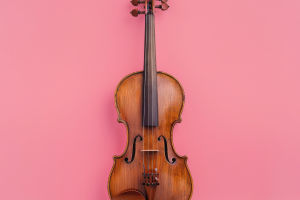Welcome, Lykkers! Let's dive into the basics and more. You've got your guitar ready, but where do you begin?
Whether you're a newbie or a seasoned player looking to refine your skills, getting the basics right and exploring some cool techniques can really amp up your playing. Let’s break down everything you need to know to get the most out of your guitar.
Picking the Perfect Guitar
1. Acoustic or Electric?
First things first, decide if you want an acoustic or electric guitar. Acoustic guitars are fantastic for beginners because they don’t require extra gear—just you and your guitar. They’re great for genres like folk and country. Electric guitars, on the other hand, are perfect for rock, jazz, and blues. They need an amplifier to unleash their full potential, but they offer a lot of versatility in sound.
2. Find Your Fit
Guitars come in different sizes, so it’s important to choose one that feels comfortable. For younger players or those with smaller hands, a 3/4 or parlor-sized guitar might be ideal. When picking one up, make sure it feels right and isn’t too heavy or awkward.
3. Budget Wisely
Guitar prices can vary widely. You don’t need to break the bank to get a good instrument. Brands like Yamaha, Fender, and Epiphone offer excellent options at various price points. It’s worth investing in a decent guitar, but there are plenty of affordable options that still sound great.
Essential Guitar Techniques
1. Tune Up
Before you start playing, make sure your guitar is in tune. Using an electronic tuner can simplify this process and ensure that your guitar sounds its best. Regular tuning is key to developing a good ear for pitch and making sure your practice sessions are productive.
2. Master the Basics
Start with basic chords like C, G, D, and E minor. These chords form the foundation of many songs and will help you get comfortable with chord transitions. Practice switching between these chords smoothly to build your finger strength and dexterity.
3. Strumming Patterns
Strumming is crucial for rhythm. Begin with simple strumming patterns and work your way up to more complex ones. Consistent practice will help you stay in time and add variety to your playing.
Advanced Techniques to Try
1. Fingerpicking
Fingerpicking involves using your fingers instead of a pick to pluck the strings. It’s a technique used in genres like classical and folk music. Start with basic patterns and gradually explore more intricate fingerpicking styles.
2. Scales and Soloing
Learning scales such as the pentatonic and major scales will help with improvisation and soloing. Practice these scales to improve finger agility and musical expression. Try creating solos over backing tracks to develop your personal style.
3. Slide and Hammer-Ons
Experiment with slide guitar and hammer-ons to add expressiveness to your playing. Slide guitar involves using a metal or glass slide to create smooth, gliding sounds. Hammer-ons involve using your hand to strike a note, creating a smooth, connected tone.
Taking Care of Your Guitar
1. Clean Regularly
Keep your guitar clean by wiping down the body and strings after each use. Use a soft cloth and guitar-specific cleaners to maintain its finish and prevent grime buildup.
2. Change Strings
Strings can get dirty and lose their brightness over time. Regularly changing your strings and keeping them clean will improve your sound and extend their lifespan.
3. Store Properly
Store your guitar in a case or on a stand to protect it from dust and damage. Avoid exposing it to extreme temperatures or humidity, which can warp the wood and affect playability.
Practice Makes Perfect
1. Be Consistent
Set aside time each day for practice. Consistent practice helps build muscle memory and improves your skills over time. Even short daily sessions can lead to significant progress.
2. Play Along with Songs
Playing along with your favorite songs can make practice more enjoyable and help you learn new techniques. It also helps you develop a sense of timing and rhythm.
3. Record Yourself
Recording your practice sessions allows you to track your progress and spot areas for improvement. Listening to your recordings can also give you a better sense of how your playing sounds.
So there you have it—some essential tips and insights to get you strumming like a pro. Whether you’re picking up your first guitar or looking to fine-tune your skills, these basics will help you on your musical journey. Keep practicing, stay curious, and most importantly, have fun with it! Happy playing!


